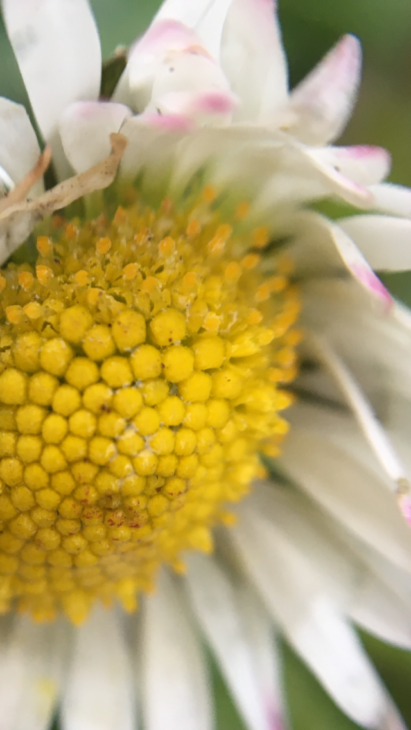The empress of flowers!
,

All around the town, on the verges, next to the footpaths, on the playing fields, the fast-greening grass has been sprinkled with splashes of white and pink where daisies are taking advantage of the short time before the mowers come out in force.
In some people’s eyes, of course, these are weeds, not wild flowers. Weeds because they’re everywhere, rather than because they are growing ‘in the wrong place’. We are very good at dismissing the common as dull, not worthy of note. But we do so at our peril. Orchids, for example, now treasured, rare and celebrated wild flowers – were once common-as-weeds.
Luckily for the daisy, it has many supporters too – a lot of them under 10 years old. They are special for them because they are so common, not despite it. Daisies are surely the first flower most of us learn to identify as children. We draw them, pick them with our toes, make daisy chains from them – and love them for their simple beauty.
A symbol of innocence then – but deceptively complicated too. As members of the Compositeae family of flowers, a daisy is not actually one flower, but many. Each petal is a flower in its own right, as is each tiny fleck of gold in its centre. In effect every flowerhead is really a meadow. And its common name, daisy, comes from ‘day’s eye’ – a nod to its habit of opening at dawn and closing at dusk, revealing the dip-dyed fuchsia pink edges of its underpetals as it does so.
Its scientific name, Bellis perennis, however, seems to have a much darker story. Bellis means ‘in time of war’ in Latin, and refers to the Romans’ practice of pounding up the plants to extract the sap, which was used as a poultice for battle wounds. So it’s obviously a flower with a long history of living with humans.
Of course daisies aren’t threatened – yet. But like the sparrows that disappeared from London, or the poppies that have vanished from our fields, who knows whether there may come a time when daisies no longer sprinkle our lawns and verges with summer. It may be worth taking the time to really look at them while you can.
And if you need further convincing, I’m clearly not the only one who thinks daisies are worth looking at. I found this written by 14th century poet Geoffrey Chaucer:
Of all the flowers in the meadow
Then love I most this flower white and red
Such as men call daisies in our town…
The empress and flower of flowers all.
